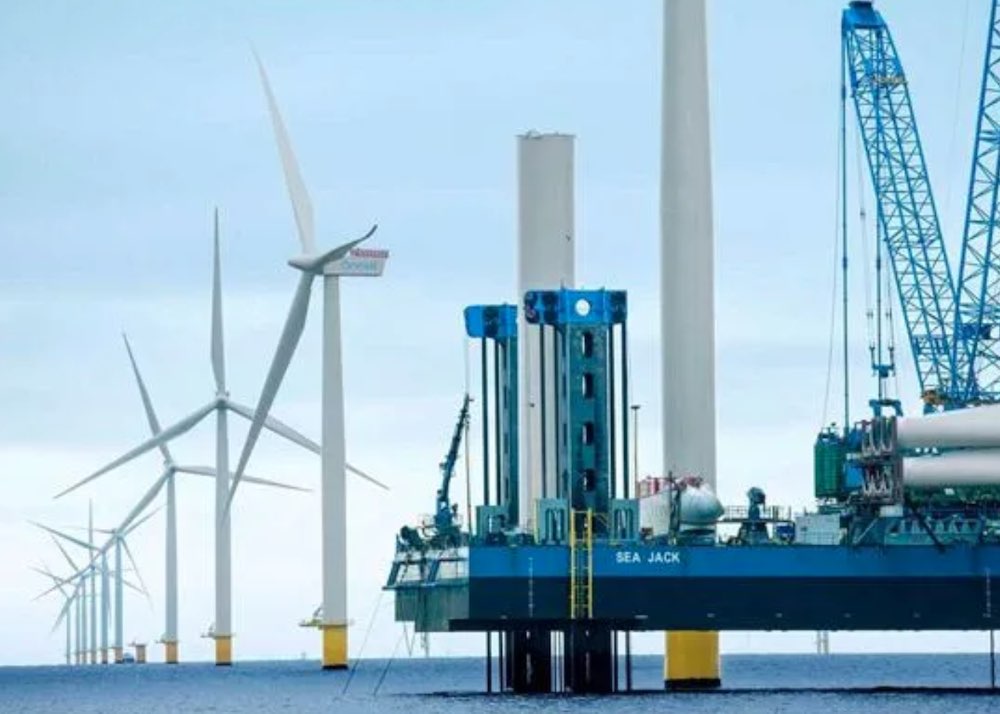Ørsted, the world’s biggest offshore wind developer, has confirmed it plans to make major investments in Australia, with the initial focus on the country’s first offshore wind zone in Gippsland, Victoria.
The Danish company’s newly appointed head of Asia Pacific, Per Mejnert Kristensen, says the company has been monitoring developments in Australia for many years, and opportunities in offshore wind, as well as onshore wind, solar and “power to X” (green hydrogen), are getting very interesting.
“We feel that with our experience and track record, we will be able to play a strong role here in the renewable sector,” Kristensen told RenewEconomy in an interview on the weekly Energy Insiders podcast.
Kristensen says Ørsted’s initial focus is on gigawatt scale projects in the Gippsland offshore wind zone in Victoria, which is likely to be officially declared shortly, allowing for the first detailed feasibility studies to be conducted.
The company is also about to open its first permanent Australian office in Melbourne.
“We are talking to a number of different stakeholders and partners here,” Kristensen says. “At this point in time, I’m not able to say anything specifically regarding that. We really feel that now we are kicking off our efforts in Australia.”
Major players converging on Victoria offshore wind
Ørsted, whose interest in Australian offshore wind was first reported by RenewEconomy earlier this year, joins a host of major international energy players jockeying for position in the nascent Australian offshore wind industry.
These include Iberdrola, Shell, Equinor, Macquarie Group’s Corio, Copenhagen Infrastructure Partners, and Vena Energy, plus a host of smaller players such as OceanEx, Flotation Energy, Bluefloat, and more.
There are now more than 20 declared projects representing more than 50GW of proposed capacity. See RenewEconomy’s Offshore Wind Farm Map of Australia
All eyes are on Victoria, which has set a target of 2GW of offshore wind in production by 2032, 4GW by 2035, and 9GW by 2040. Its newly announced 95 per cent renewables target for 2035 counts heavily on offshore wind.
But the federal government has also flagged five initial offshore wind zones, mostly grouped around Victoria and NSW, and also likely to expand to Tasmania, South Australia and Western Australia.
Gippsland is already the focus of at least five competing projects, including the 2.2GW Star of the South project, regarded as the most advanced in the country, and the most recently announced 2GW Blue Marlin project, unveiled by Singapore-based Vena this week.
Joint venture with Copenhagen Infrastructure Partners
Interestingly, Ørsted just this week announced a major joint venture with Copenhagen Infrastructure Partners, the majority owner of the Star of the South project, to develop 5.2GW of offshore wind capacity in Danish waters.
Ørsted already has 13GW of offshore wind capacity under operation, and a stated goal to expand this to 30GW by the end of the decade.
Kristensen says the industry – and consumers – are suffering from rising costs “everywhere in the world”, particularly for steel prices, but also for interest rates.
“It is putting some of both pressure on cost. I think that would be fair to say. And I think that’s acknowledged by everyone. Now, this, of course, cannot cannot keep going like this. So we expect it to be a temporary thing with the extreme levels that we’ve seen in many parts of the world now.
“It is … putting pressure on the companies and the capital, we have to … have a very robust balance sheet. We have strong support from our investors. And we have a very good credit ratings.
“So I think (Ørsted) remains in the strongest position to keep developing our offshore wind ambitions. And we are indeed on track to to achieve this 30 gigawatt into 2030.
“It would be fantastic if we could get the first offshore wind farms going, for example, here in Victoria, just before the turn of 2030.
Ørsted has 30GW offshore wind target for 2030
“We know that this would require the frameworks to be in place rather quickly. But we also have the sense that this is what the Commonwealth Government and the Victorian state government are working very hard on.
“So I would say that, that it will be be tight, but I think it’s still it is possible with the right framework. And indeed, for me personally and for (Ørsted), we would indeed love Australia to be part of this 30 gigawatts.”
Ørsted recently set a 100 per cent renewables target for all its 22,000 suppliers by 2025, and Kristensen says the company is hopefully of sourcing Australian content – where it makes sense – when it does begin projects in coming years.
Ørsted built the world’s first offshore wind farm in 1991 and now lays claims to a 30 per cent share in the global industry.
Power-to-X technology
Kristensen also says the company is interested in onshore wind and solar projects in Australia, as well as the “Power-to-X” technology that is included in its newly announced deal with CIP in Denmark.
Power-to-X describes the production of green hydrogen or green fuels to help power heavy industry and heavy transport. “We are a long term player,” Kristensen said.
Ørsted has been cited as a potential bidder for CWP Renewables, which has a gigawatt scale portfolio of existing and pipeline projects in wind, solar and storage. Ørsted declined to comment on specific opportunities.
Note: The latest episode of RenewEconomy’s Energy Insiders podcast, including the interview with Kristensen, will be published on Thursday.
See also RenewEconomy’s Offshore Wind Farm Map of Australia










